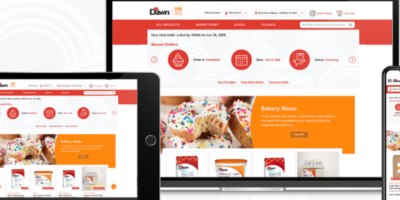
Internet buyers prefer to get an excellent deal, however additionally they wish to know for certain what they’re getting. Amongst U.S. shoppers, 46% is not going to purchase a product—on-line or in retailer—if the retailer doesn’t present in-depth particulars on-line, based on survey outcomes from ecommerce know-how supplier Salsify Inc.
Additionally, 30% of U.S. customers say they won’t buy if photos are lacking or of low high quality. And 70% stated they’re extra doubtless to purchase a product from a personally related product web page, displaying how helpful it could be or the way it matches into their life.
In November 2021, Salsify surveyed greater than 4,000 shoppers in the USA, the UK, Germany and France, together with 1,327 U.S. customers.
The standard of product pages impacts extra than simply on-line gross sales, says Peter Crosby, vice chairman of company advertising and marketing at Salsify. These pages may affect whether or not customers purchase from a retailer’s retailer. Partly, that’s as a result of, when doing product analysis, simply 10% of customers examine merchandise in shops. The remaining use on-line sources, equivalent to a retailer web site (42%) or a search engine (25%).
Along with trying up product info, customers use digital info to check costs and search for coupons—even when buying in a retailer. Most customers use the online to check costs throughout a number of retailers (59%) and/or verify for digital coupon code 54%. Additionally, 37% stated they regarded up product info on-line whereas buying in a retailer.
Among the many U.S. customers surveyed, 40% stated they had been most certainly to purchase a product in a retailer, making in-store buying the highest shopping for possibility. However when mixed, on-line channels had been extra widespread at 47%. Among the many U.S. customers surveyed, 35% stated they had been most certainly to purchase from a retail web site. 12% stated they had been most certainly to purchase through retail apps.
Credibility counts
46% of U.S. customers surveyed had been prepared to pay extra for the same product if it got here from a model they trusted, in contrast with simply 30% of customers in 2021. Nonetheless, solely 30% stated they’d pay extra in trade for discounted delivery and 29% stated they’d pay extra for sooner delivery.
“Shoppers are in search of the boldness to purchase,” after they go to a retailer’s web site, Crosby says. That’s true whether or not the buyer plans to order on-line or is researching a product to purchase at a retailer’s retailer. Retail websites that don’t do that can lose prospects to those who do, he says.
Crosby says the survey outcomes reveal how smaller retailers can compete in opposition to giants like Amazon.com Inc.
“The best edge a smaller retailer has is its expertise,” Crosby says. As a result of customers see product pages as “the supply of reality” for product info, he says, retailers achieve a bonus after they present customers with a deep dive into product particulars and provide high quality product photos. That’s very true when photos present how the purchaser may use or put on the product.
These sorts of particulars, he says, make the content material extra related for web shoppers. For that purpose, he encourages attire retailers to indicate their clothes worn by “folks like me” fashions who appear like typical People relatively than trend fashions.
The pandemic modified shopper conduct
The survey discovered that simply 34% of U.S. customers declare the pandemic has not modified their buying habits. The remaining stated the pandemic had led them to make modifications equivalent to buying on-line extra usually than earlier than the COVID-19 pandemic (43%), buying extra on discounted web sites (9%), making extra use of use “drive to” omnichannel companies equivalent to purchase on-line, choose up in retailer (8%). 5% of respondents stated they store on-line much less and extra in-person at bodily shops than earlier than the pandemic.
The shift to on-line shopping for was most excessive within the grocery class. Among the many U.S. customers surveyed, 67% stated that they had by no means shopped for groceries on-line earlier than the COVID-19 period. Most customers now purchase not less than a part of their groceries on-line, together with 15% who solely purchase groceries on-line.
Variations throughout international locations
The survey additionally discovered a large variety of customers care in regards to the sourcing and sustainability of merchandise earlier than shopping for. However in relation to recycling, there are vital variations throughout the 4 international locations surveyed. Within the U.S., 33% of customers stated they verify product and packaging recycling info earlier than shopping for, in contrast with 53% in Germany, 44% in France and 31% within the U.Okay.
Different notable cross-border variations included:
- 40% of People had been affected by provide chain shortages on the finish of 2021, in contrast with solely 19% of French, 28% of British shoppers and 29% of German customers.
- The French are most certainly to purchase straight on a model web site, with 26% saying that’s how they plan to buy subsequent yr. That compares to 19% of British shoppers, 15% of Germans, and solely 13% of People.
- In every nation, most shoppers say they select personal label merchandise due to their decrease costs. Within the U.S., liking the retailer’s in-house model made a distinction to the perceptions of the retailer for 37% of these surveyed. In distinction, 8% of the British, 13% of Germans, and 14% of French say that mattered.
Favourite




















